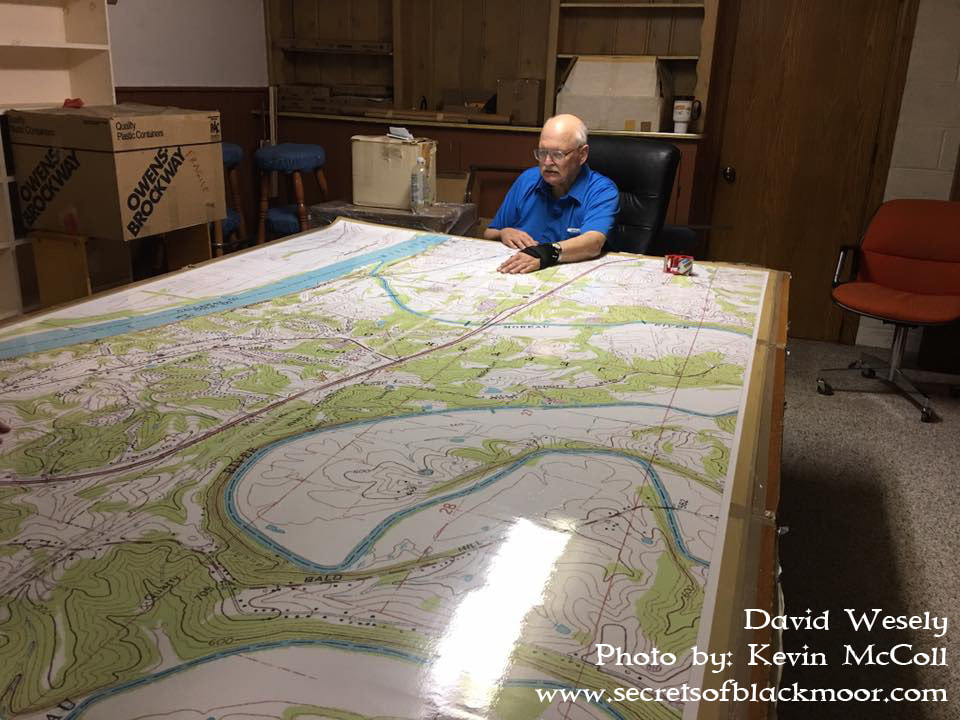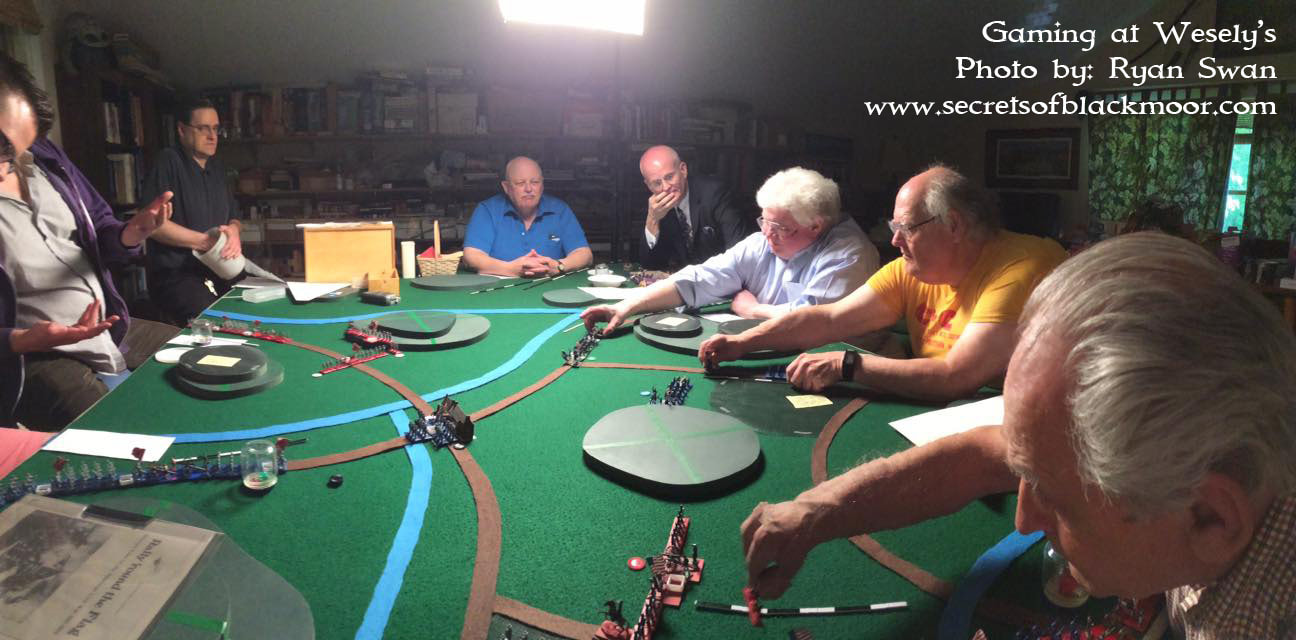|
Today I want to address the concept of balance in RPGs. I have specific lines of inquiry one should consider when discussing balance: -Do we need balance in RPG rules -Where exactly do we expect balance to reside within an RPG - between players based on classes or between the players and the game reality -Should balance emerge from game play rather than game mechanics -Why would one prefer an imbalanced war game -Why would one prefer an imbalanced RPG Perhaps most disturbing to me as a game historian is the desire by gamers who are focused strictly on RPGs to separate Original Dungeons & Dragons and contemporary D&D by defining OD&D as a war game, which it never was. I also see a good deal of disparaging language in regard to war games. The only conclusion I can come to in consideration of these arguments against war games, within today's RPG game community - these gamers have no idea how war games are deeply embedded within every edition of Dungeons & Dragons. One can easily spot RPG war game heritage as a tangible property in all RPGs. Common RPG language terms such as, attack die roll, damage die roll, flank attack, and rear attack; all of these ideas come straight out of war games. Yet, if one looks with a critical eye, there are far more subtle and complex war game concepts embedded in every RPG produced to this day. I often spend time on social media discussing games in general and today one of the common discussions popped up again; the concept of balance in RPGs. While many argue the pros and cons of balance in RPG design, I consider the real issue at hand to be why balance is always a problem for these games and how the true nature of good RPG design and game play is ideally rooted in war game concepts that can go entirely against ideas about balance within game rules and scenarios. One such deep design idea may not be exclusive to one specific game designer, yet it should be noted how the confluence of war games with RPG elements, and what is more visibly defined as RPGs, resulted in the exploration Asymmetrical Game Scenarios by none other than David Wesely. It all began when a handful of gamers in Minnesota had the synchronous experience of all reading a very old War game called, Strategos the American Game of War. Without knowing it these kids were poring over actual military training manuals. Yes, it is a game, but it is the official U.S. Army game of 1880.
Most over the counter board war games of the 60's era were designed to be balanced. They came with what was essentially a set piece battle where units had specific start points and the overall forces were balanced on strength. Of the many ideas presented in the Stretegos rules, and I can tell you it is expansive because I've read it cover to cover, David Wesely fixated on, and expanded, the crazy idea of having military forces be uneven. It may be that Wesely took these ideas so far beyond what was presented within Strategos that he was inventing a new kind of war game already by this point. The Twin Cities group was already exploring miniature battles and so the idea of having a tool kit of military toys to build armies and battle scenarios was familiar to them. In many cases these commercial war games came with charts for "purchasing armies." What this meant was that each player would get an imaginary value like Monopoly money in order to buy all the units for their army. These types of systems were designed to provide an equal chance of winning and enjoyment for both sides in a game with the only unbalanced element being the use of terrain and unit position to gain advantage during play. No one likes an uneven game. Even in a real war, if either side perceives their force to be too small, or not have enough bonus tactical advantages to balance a battle, they will simply retreat. While you will not see it in a war game, balance is a real element for real military leaders. They know they have 3 options: 1. Fight ; 2. Negotiate*: 3. Run Like Hell!* *Option #2 can also be read as: Maneuver for a stronger position. *Option #3 Run Like Hell, does not make for good war game scenarios thus while you will not see it in most games, it is an important part of game design. If as commander you have all those choices, you can avoid losing a battle by running and preserving your force for later. Many RPG players seem to not know this option exists and proceed straight to option #4 known as the Total Party Kill. As always with my long rants, I am trying to make a point here. This point is simple: Balance is created through the choices taken by players in a game, just as balance is often achieved by real leaders in real wars by their command decisions. Of course, a real commander's goal is to tip the balance in their favor. Since RPGs arise from war games, and war games are simulations of real war; one can only come to the realization that balance cannot reside within game rules and that balance comes from player agency. Lets get back to David Wesely. For whatever reason, he ended up becoming the primary referee in the war game group. As referee he began to explore how to make the game scenarios he was preparing for his players more interesting. This would lead him to doing all kinds of crazy things from having units that began the game hidden by the landscape, to having local civilians in the town that his players could gather intelligence from.* *One has to ask: Is this war game an RPG? I think it is. What this created is a war game that has a commodity within it of knowledge and information. If you know where the other guy is, you can move your troops to take advantage of that information and win a battle with a weaker force. Or, as Stonewall Jackson was fond of doing, if you move around a lot and your enemy has no idea where you are concentrating your forces, you can pick a weak spot to overwhelm. At the same time, Wesely added another layer to his war game RPGs - hidden agendas. If each player has a secret motive that no one else knows about, they can fulfill their objective and win a game without the need for winning a battle. These Wesely devised co-factors within his war game scenarios expand everything. If you have forces of differing strength, yet who's chances of winning are not based on military strength but rather these other ephemeral ideas, a game does not need to be balanced at all! When we Interviewed the Blackmoor Bunch, Ken Shepro pointed out how most battles are won even before the two sides meet on the battle field. That this Pre-Battle Activity of, maneuver, intelligence gathering, and who knows what else, is what their game group was most interested in simulating. How does one do it though? Here is an example for a game scenario one could create by using Wesely's ideas: Player A is commanding a large military force that is marching in a column along a road. The map has many roads and the commander can choose which is preferable. It is entirely up to Player A how to proceed. They can send out scouts to watch for enemies. They can take a wildly divergent route somewhere else where they may need to build a bridge before they can cross a high running river. Maybe they do something to create a decoy for possible enemies. It's all up to the player to decide. Yet their orders are simple: March over the map and meet up with the main column. Player B has a force that is about 20-25% the size of the Player A's force. They have been ordered to scout and if possible delay the approaching column of troops. Perhaps this is all part of a much larger imaginary story. The enemy column is on its way to form up with an even larger enemy force somewhere off the map. If you can either stop them, or delay them, your tiny force can change which side will win the imaginary off board battle. Maybe you can burn all the bridges where the roads cross rivers, or maybe you can be really sneaky and ambush the marching enemy column. It's up to you what you want to do as Player B. Consider that at some point, it may be Player B's best choice to sacrifice their entire force in a losing battle in order to achieve the greater objective. There is a lot going on in this scenario. Players are interacting with the world setting as well as the potential direct confrontation of a battle. Certainly any scouts that come into contact will be having minor skirmishes. Wesely was doing things very similar to this example and much more beginning around 1965. And it is this kind of behavior within a war game that, for me, leads to asking questions such as: Is this kind of Asymmetrical Game already a Role Playing Game? Let's get back to my list of original inquiry: -Do we even need balance in RPG rules -Where exactly do we expect balance to reside within an RPG - between players based on classes or between the players and the game reality -Should balance emerge from game play rather than game mechanics -Why would one prefer an imbalanced war game -Why would one prefer an imbalanced RPG David Wesely would go on to invent a type of Role Playing Game called a Braunstein. It was entirely asymmetrical, or imbalanced. In a sense, each player had to create their own balance during game play as part of achieving their winning objectives. I will leave you to decide for yourself, the value of balance in RPGs, as well as whether or not RPGs should acknowledge their war game heritage as an essential element of the game. Thanks for reading, Griff
1 Comment
|
DVD'S, Books, T-shirts, games and more available on our store.
AuthorSecrets of Blackmoor is a Feature-length documentary about the birth of the “Mother of all Games;” Dungeons & Dragons. Archives
January 2024
Categories |
Privacy Policy
All Contents Copyright © 2023 The Fellowship of the Thing, Ltd. - All Rights Reserved
All Contents Copyright © 2023 The Fellowship of the Thing, Ltd. - All Rights Reserved



 RSS Feed
RSS Feed